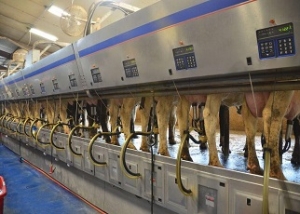Dairy in the World
Dairying in the Next Half-Decade

Dr. Jack Britt, consultant and Professor Emeritus at North Carolina State University, shared his projections for the dairy industry’s future in, “Learning from the future: A vision for dairy cows and farms in 50 years.” Britt delivered the presentation at the 2021 Dairy Cattle Reproduction Council Annual Meeting in Kansas City, Mo.
He said U.S. dairy producers need to be aware that they are players in a global industry, and very efficient ones at that. Britt believes U.S. dairy products will help fulfill global demand because the United States is one of the highest-ranking countries in terms of cropland available to feed cows. Russia and Canada also are among the top 3. China has the least available cropland relative to their number of cows.
World population predictions suggest that by 2070, 82% of the people in the world are going to live in Asia and Africa. The population of Africa is projected to grow by 146% in that timeframe, while Europe will be down 10.8%.
“We need to ask ourselves, `What should we produce that the rest of the world may want/can afford?’” stated Britt. “And what products can hold up and be stable to ship for two months?”
He shared some interesting statistics on the number of cows it takes to produce 100 L of milk per day. The U.S. is currently first at 3.5 cows. The UK and Germany are tied for second and third at 4.5 cows. In less-developed companies like Tanzania, it’s 176 cows. “That’s not sustainable,” declared Britt.
Among Britt’s other intriguing observations and predictions were:
-
Cows are moving to larger herds worldwide, and when they enter those herds, they make more milk.
-
Genome editing for the polled gene shows promise in both improving the welfare of calves and consumer acceptance of genome editing as a “gateway” to other edits.
-
There will be a lot more crossbred dairy cattle than purebreds, because crossbreds outperform Holsteins in fertility, health, and environmental footprint.
-
Milk and beef production will continue merging. Calves produced in dairy-style rearing systems produce less than half the greenhouse gases emitted by traditionally raised beef calves.
-
Dairies will migrate away from the 7 states that currently produce 35% of the milk in the United States, mostly due to water and feed availability. The major relocation target will be the upper Midwest.
-
“Carbon-neutral” farming will be embraced, assisted by innovative technologies to manage bedding, fertilizer, and potable water in closed-loop systems.
Britt also shared United Nations/FAOSTAT data that ranked the United States #50 out of the top 100 countries in fertilizer use, and 70th out of 100 in pesticide use. “Contrary to popular believe, we use our resources very precisely, and that’s a message that needs to be much more widely shared,” he stated.





















